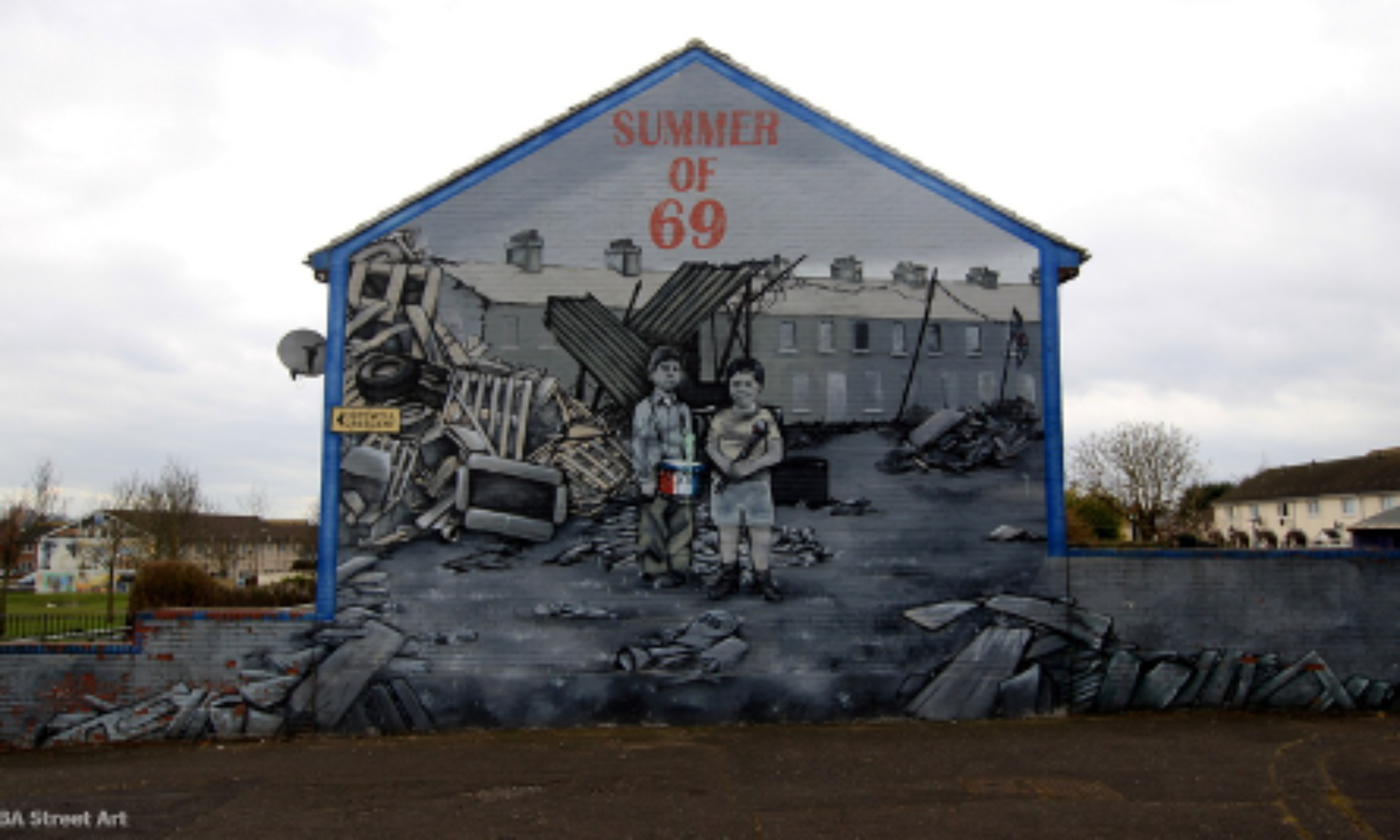Looking back at everything we’ve read and discussed this semester, it’s hard for me to pick a favorite text. All the texts we read convey powerful and personal testimonies of the divisive conflicts riddling American and Northern Irish society in 1968. Reading the stories of civil rights leaders, excerpts of court trials of protesters in the US, and the historically-rooted plays about Northern Irish citizens offered me a lens into the deeply emotional effects this traumatic and tense period had on peoples’ personal lives. The witness of these authors enables us, even fifty years later, to feel some of the emotion they felt in the midst of that chaos, and it allows their stories to continue to engage and effect social change in new audiences.
What I think many of these authors give witness to is the need for a personal sense of solidarity to overcome violent divisions. The Troubles, the U.S. civil rights movement, and the Vietnam War protests all grew violent because people refused to build relationships and truly encounter the “other.” When oppressive systems continually deny people their rights, frustration and a loss of hope provoke the oppressed to turn to violence as a last-ditch effort of calling attention to their struggles and prompting an immediate reaction from the larger society. Most of the texts we’ve read, however, affirm that violence is not the answer to violence. From the agape love promoted by MLK to the “Christ in each of us” that Marian recognizes in Pentecost to the revolutionary suicide that Huey P. Newton espoused, an overarching theme of the texts is the call for solidarity–the ability to look beyond yourself and commit to the common good—that enables us to fight injustice while bringing about reconciliation and community in times of conflict.
At the beginning of the semester, I didn’t understand how a whole course could be devoted to two nations’ experiences with a single year. Why learn so much about 1968? Was it really that special of a year? After reading all the texts from this class, I understand the significance of this tumultuous year and can see why it matters today. I think it’s crucial to recognize that remnants of the conflicts of the 60s often still exist in 2020—Northern Ireland is still grappling with its violent past and the wounds left by the Troubles, and this summer woke white America up to the undeniable persistence of systemic racism in our nation. These texts, then, are not just historical literature. They offer us insight into how to deal with modern conflicts, showing us how both violent and nonviolent responses to conflict have played out in the past. The overarching messages of justice and a love that overcomes division by recognizing the humanity of the opposing side, however, are timeless. Drawing on these texts gives us a framework for contextualizing conflict and finding a path forward to reconciliation, even today.
